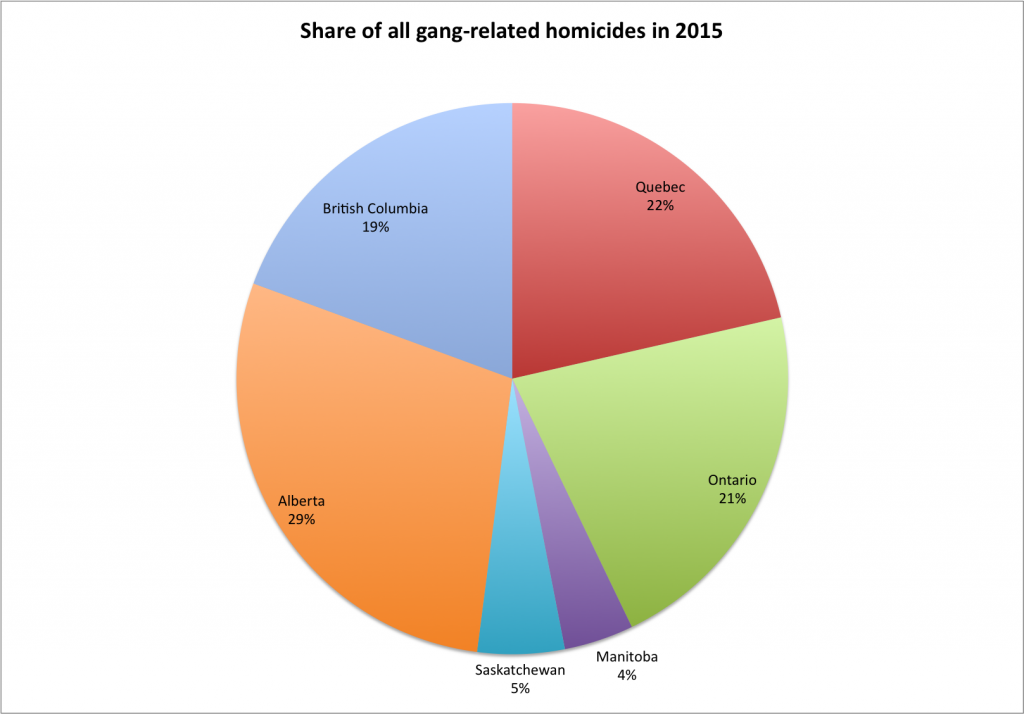7 charts that tell the story of Canada’s higher homicide rate
Canada’s homicide rate rose in 2015. Here’s a look at some of the factors that were at play.

Homicide detectives investigate at a Mac’s convenience store in Edmonton on Friday, December 18, 2015. THE CANADIAN PRESS/John Ulan
Share

On Wednesday Statistics Canada released detailed homicide statistics for 2015. StatsCan had already released crime statistics by individual police force earlier this year, which Maclean’s analyzed for its annual Dangerous Cities package. (Click here for interactive tools to see how your city compares.) With this release though, the agency provides deeper insights into the most heinous crime of all: murder.
Here are 7 charts to put Canada’s homicide statistics in perspective.
1. Canada’s homicide rate rose in 2015
Canada’s homicide rate has been in decline for forty years, but there have been bumps along the way. In 2015 the rate rose to 1.68 per 100,000 people, up from 1.47 the previous year. It will take several more years before we know whether this was a blip before resumption of the downward trend, or the start of something else.
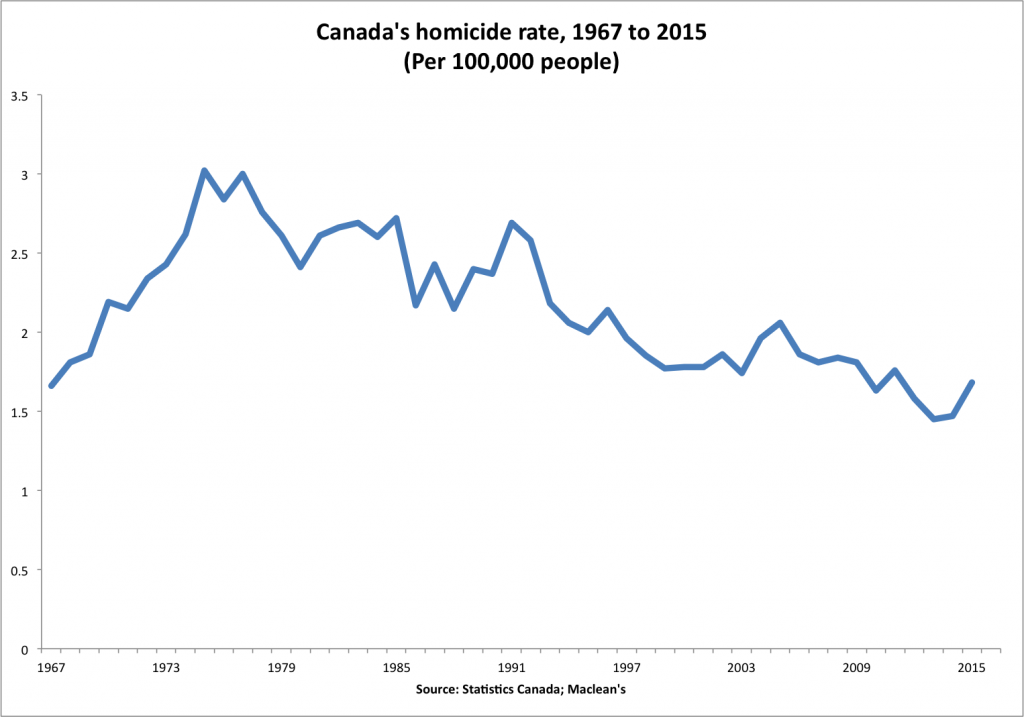
2. Almost all provinces saw their homicide rate rise
Prince Edward Island was the only province where the murder rate fell in 2015, while Saskatchewan and Alberta—two provinces still in the grips of an economic downturn—witnessed the biggest increase.
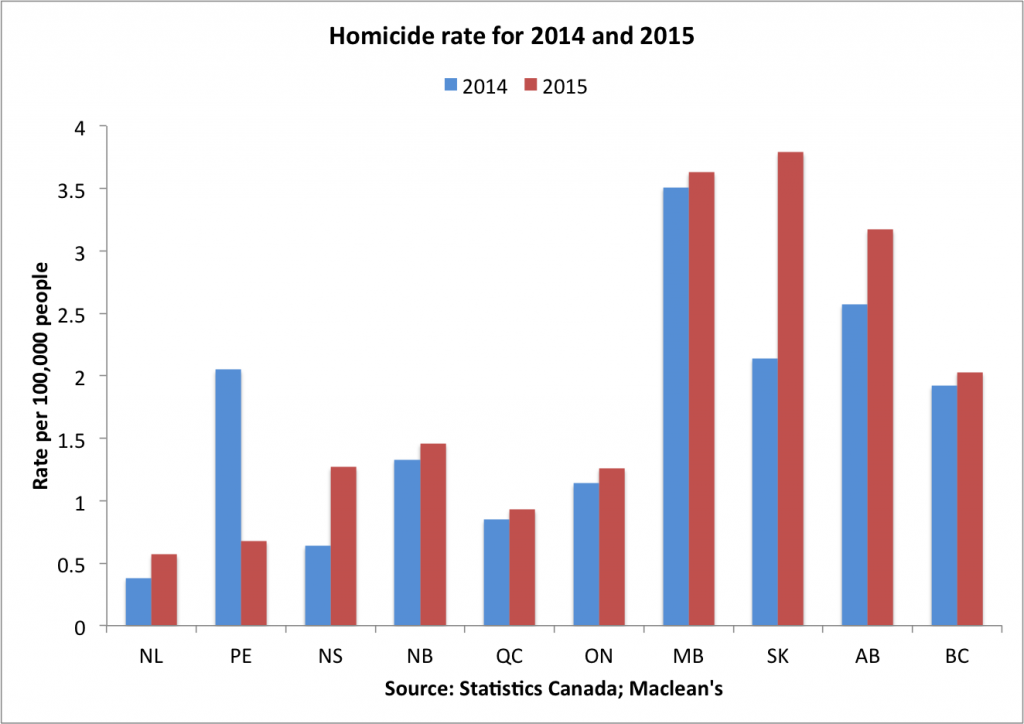
3. The long-term decline in homicide wasn’t even
Among most of Canada’s 10 largest census metropolitan areas, homicide rates are way down from 30 years ago, however that’s not the case for Calgary, Edmonton and Winnipeg.
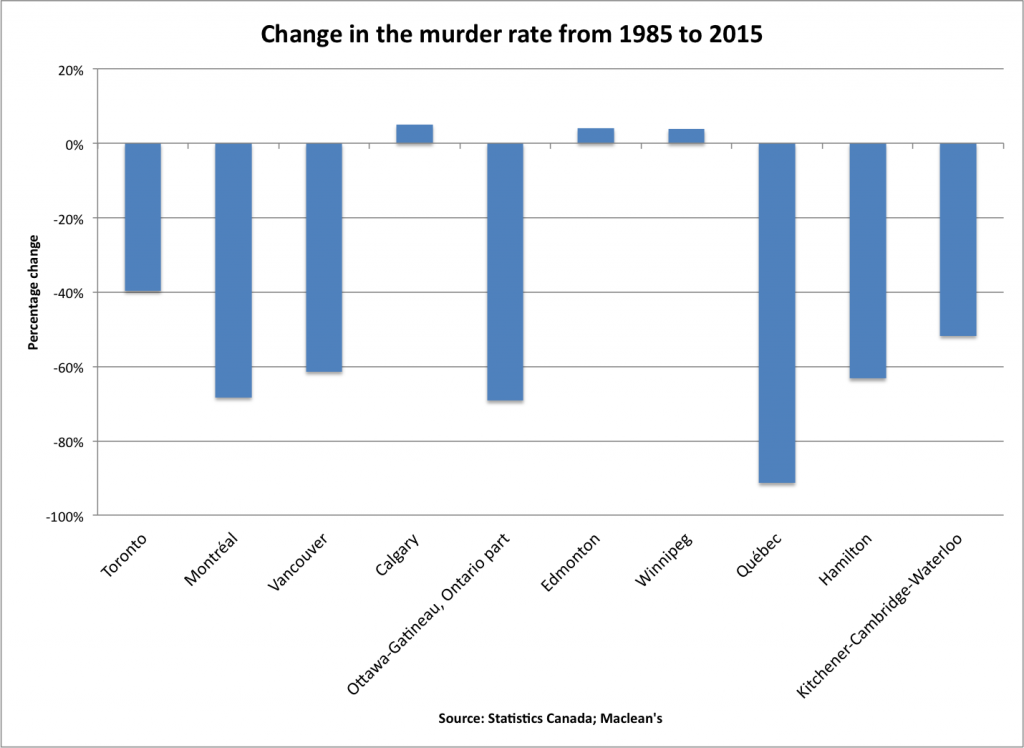
4. The outsized violence of young men
Among accused murderers in 2015, men aged 18 to 24 were by far the largest demographic group, while more males between 12 and 39 killed than were killed.

5. Aboriginal people disproportionately represented in homicide stats
While Aboriginal people accounted for less than 5 per cent of Canada’s overall population as of the last census, they were one-quarter of all homicide victims, and were responsible for one-third of all murders. In Manitoba and Saskatchewan, Aboriginal people accounted for between 7o and 80 per cent of all victims and accused. Canada needs to address this violence head on, argues Scott Gilmore.

6. Shootings down, stabbings up
Here’s a breakdown of how the method of murder has changed over the last four decades. Shootings once accounted for nearly half of all murders.
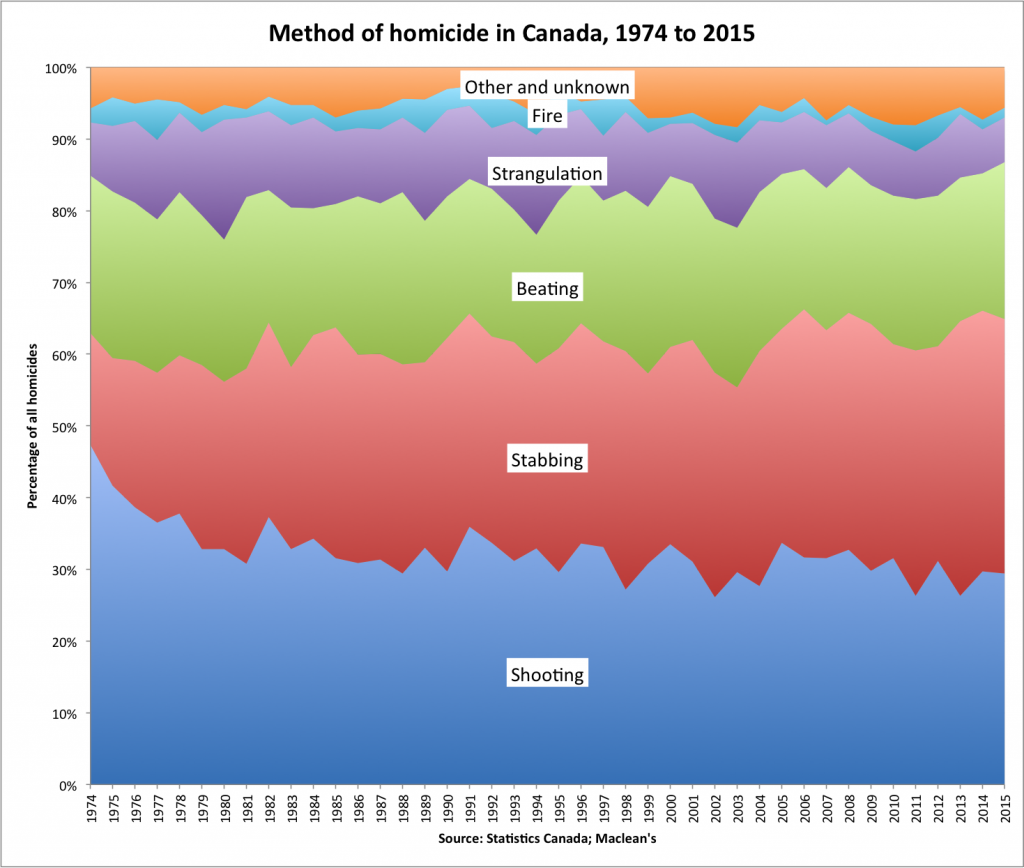
7. Alberta’s gang problem
Gang-related murders tripled in Alberta last year, driving up the provinces homicide rate. While Alberta’s population is less than one-third the size of Ontario’s, it accounted for the largest share of all gang murders.
